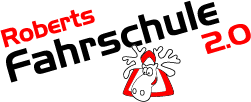Israeli celebrations go far beyond the usual, even though most wedding ceremonies and celebrations involve some sort of ceremony and fun. The bride festival, which has an amazing amount of history and tradition, is the most significant function in the lives of countless Jews. I jpeoplemeet.com reviews have personally witnessed firsthand how little thought and planning goes into making sure the day goes smoothly and that each child’s unique style beams through on their special day as someone who photographs many Jewish ceremonies.

The ceremony itself takes place under the chuppah ( literally a canopy of marriage, derived from the book of Joel 2: 16 ), which symbolizes a bride coming out of her father’s house to enter her husband’s home as a married woman. The chuppah, which is customarily adorned with a tallit ( the fringed prayer shawl worn during services ), is an exquisite representation of the couple’s newfound intimacy.
The wedding will become escorted to see the wedding before the principal service starts. She did put on a mask to cover her face; this custom is based on the biblical account of Joseph and Miriam. It was thought that Jacob could never wed her until he had seen her face and was certain that she was the single for him.
The man will consent to the ketubah’s conditions in front of two witnesses after seeing the wife. The couple’s duties to his wedding, including providing food and clothing, are outlined in the ketubah. Hebrew and English are the two main languages used in contemporary ketubot, which are usually equitable. Some couples even decide to have them calligraphed by a professional or add extra special touches with personalized adornments.
The handful did recite their commitments beneath the huppah. The bride will then receive her wedding ring from the groom, which should be entirely flat and free of any markings or stones in the hopes that their union did be straightforward and lovely.
Either the priest or the designated family members and friends recite the seven gifts known as Sheva B’rachot. These blessings are about enjoyment and love, but they also serve as a reminder to the couple that their union did include both joy and sorrow.
Following the Sheva B’rachot, the pair does crack a cup, which is customarily done by the groom. He may remain asked to trample on a goblet that is covered in towel, which symbolizes Jerusalem’s Temple being broken. Some couples opt to be imaginative and use a different kind of thing, or even smash the crystal together with their hands.
The couple likely like a celebratory marriage feast with music, dancing, and celebrating following the chuppah and torres brachot. Men and women are separated at the start of the bride for social, but once the older visitors leave, there is typically a more vibrant celebration that involves mixing the genders for dance and meal. The Krenzl, in which the bride’s mother is crowned with a wreath of flowers as her daughters dance around her ( traditionally at weddings of her last remaining children ), and the Mizinke, an exercise for the newlyweds ‚ parents, are two of the funniest and most memorable customs I’ve witnessed.


Hinterlasse einen Kommentar